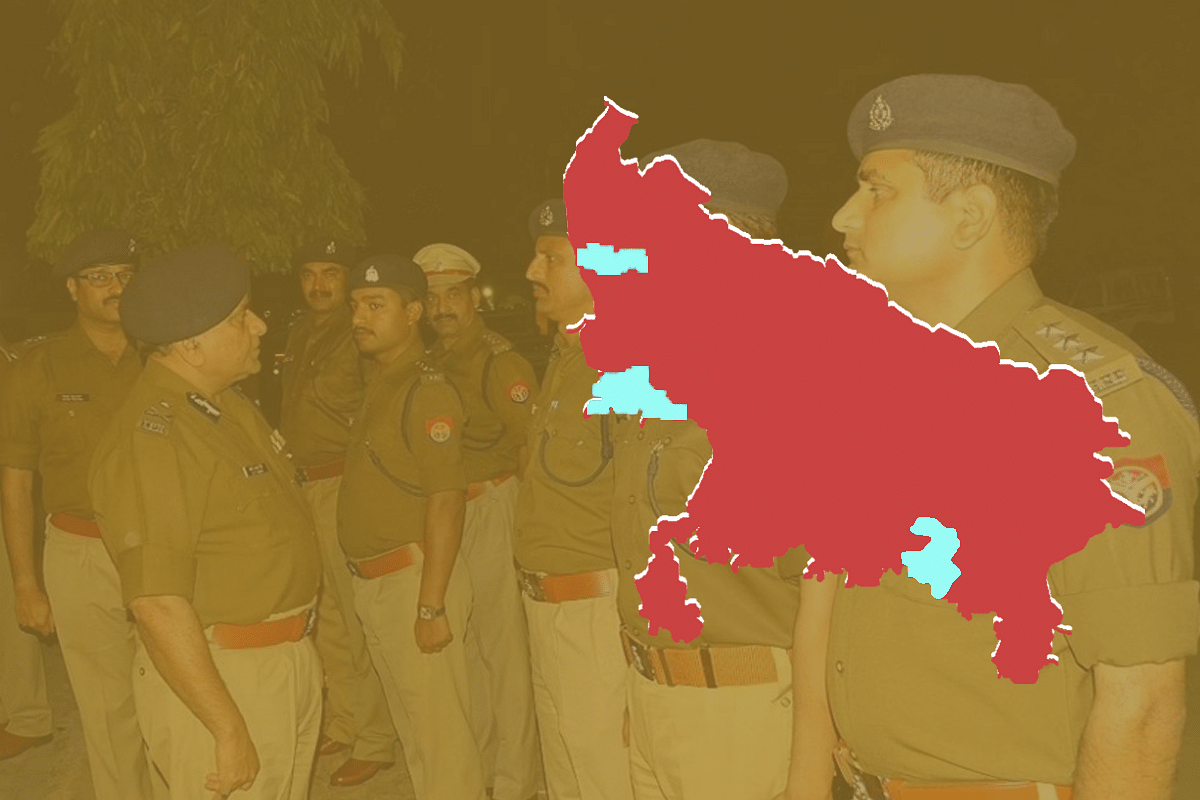Politics
Uttar Pradesh Model: How Commissionerates Ensure Better Policing
- The commissionerate system will increase efficiency and turn-around-time of the police force.
- Seven districts of UP have a commissionerate now and the system can be expanded further to other districts.

Agra, Ghaziabad and Prayagraj districts to have commissionerates
Last week, the Uttar Pradesh cabinet gave its approval for setting up police commissionerates in Agra, Ghaziabad and Prayagraj districts. With the new additions, UP will now have seven commissionerates in total.
The concept was first brought into the state in January 2020 by setting up commissionerates in Lucknow and Gautam Buddha Nagar, where Noida is located.
After that, it was implemented in Kanpur Nagar and Varanasi in March 2021. But the question arises why is the UP government expanding the commissionerate system?
Better policing
In a commissionerate system, the Commissioner of Police (CP) has powers equivalent to that of a magistrate. The commissioner is the head of a unified police command structure of the district and reports directly to the state government.
While in an ordinary system, the Superintendent of Police (SP) is the head of the police force in the district and the SP has to report to the District Magistrate (DM).
In this 'dual system' of administration, the police have limited powers and often have to wait for approvals or permissions from the DM for pursuing any issue further. This makes policing slow and less effective.
Now with the commissionerate system, the police can provide "quick justice", Additional Director General of Police (ADG) Law and Order Prashant Kumar says.
He further explains to Swarajya, "Commissionerate system is basically an officer-oriented system where the IPS officers have greater powers. They can issue NOCs (No Objection Certificate) and other approvals."
Kumar says, "When the approach becomes officer-oriented, we can expect better services and better behaviour from the police force. This helps us to improve our image among the public and respond better."
The effectiveness of a commissionerate system can be understood from its success in those four districts where it was implemented earlier.
The rate of resolution on the Integrated Grievance Redressal System (IGRS) with reference to the Chief Minister is 96.44 per cent for Varanasi above 97 per cent for the other three districts since the commissionerates were set up.
While with reference to the Government of India, the rate of resolution is around 98 per cent for all the four districts, a document from UP police headquarters, accessed by Swarajya, suggests.
Also, since 2020, all the recognised mafias in these four districts were brought under the Gangster Act and properties worth Rs 681 crore were seized from these mafias till 23 October 2022.
A reduction in the number of crimes from 2019 to 2021 is also witnessed in the four districts. Gautam Buddha Nagar and Kanpur recorded respective declines of 70 per cent and 47 per cent in incidents of loot.
All four districts recorded a more than 20 per cent decline in vehicle theft and burglary incidents. Rape incidents decreased in Gautam Buddha Nagar by 57 per cent and 27 per cent in Kanpur.
The new commissionerates
According to the Police Act, a commissionerate can be set up in any district that has a population of more than 10 lakh. Going by this criteria, most districts of UP are eligible to have a commissionerate.
Hence, the need for a commissionerate is decided on the basis of a number of factors. The complexity of the law and order situation and the dynamics of the city are taken into account.
For example, Prayagraj is the most populated city in UP, according to the 2011 census. However, the factor of it being a religious hub was given more weightage while choosing it as a commissionerate.
Similarly, Ghaziabad was chosen because it is the gateway to UP and an industrial district. The growing urbanisation and increased crime rates in the district made it fit to have a commissionerate.
Agra doesn't come in top 10 most populated districts of the state but it was chosen because it has a tourist attraction and a number of industries.
The acceptance
The police has been demanding a commissionerate system in UP since 1970s. In 1978, setting up a commissionerate in Kanpur was on the cards but could not materialise due to resistance from the IAS lobby.
ADG L&O Kumar explains, "Often IAS officers believe that a commissionerate system will decrease their powers. However, that's not the case. It is to provide better services to the common people."
He also suggests that after seeing the success of this system, even other political parties have started demanding for a commissionerate.
For instance, Bahujan Samaj Party (BSP) leader and Bijnor MP Malook Nagar demanded for a commissionerate in Meerut. "They support when we deliver," Kumar says.
The UP government has started the commissionerate system from top priority areas and will further expand it to other districts as the feedback has been positive till now.
Support Swarajya's 50 Ground Reports Project & Sponsor A Story
Every general election Swarajya does a 50 ground reports project.
Aimed only at serious readers and those who appreciate the nuances of political undercurrents, the project provides a sense of India's electoral landscape. As you know, these reports are produced after considerable investment of travel, time and effort on the ground.
This time too we've kicked off the project in style and have covered over 30 constituencies already. If you're someone who appreciates such work and have enjoyed our coverage please consider sponsoring a ground report for just Rs 2999 to Rs 19,999 - it goes a long way in helping us produce more quality reportage.
You can also back this project by becoming a subscriber for as little as Rs 999 - so do click on this links and choose a plan that suits you and back us.
Click below to contribute.
Latest